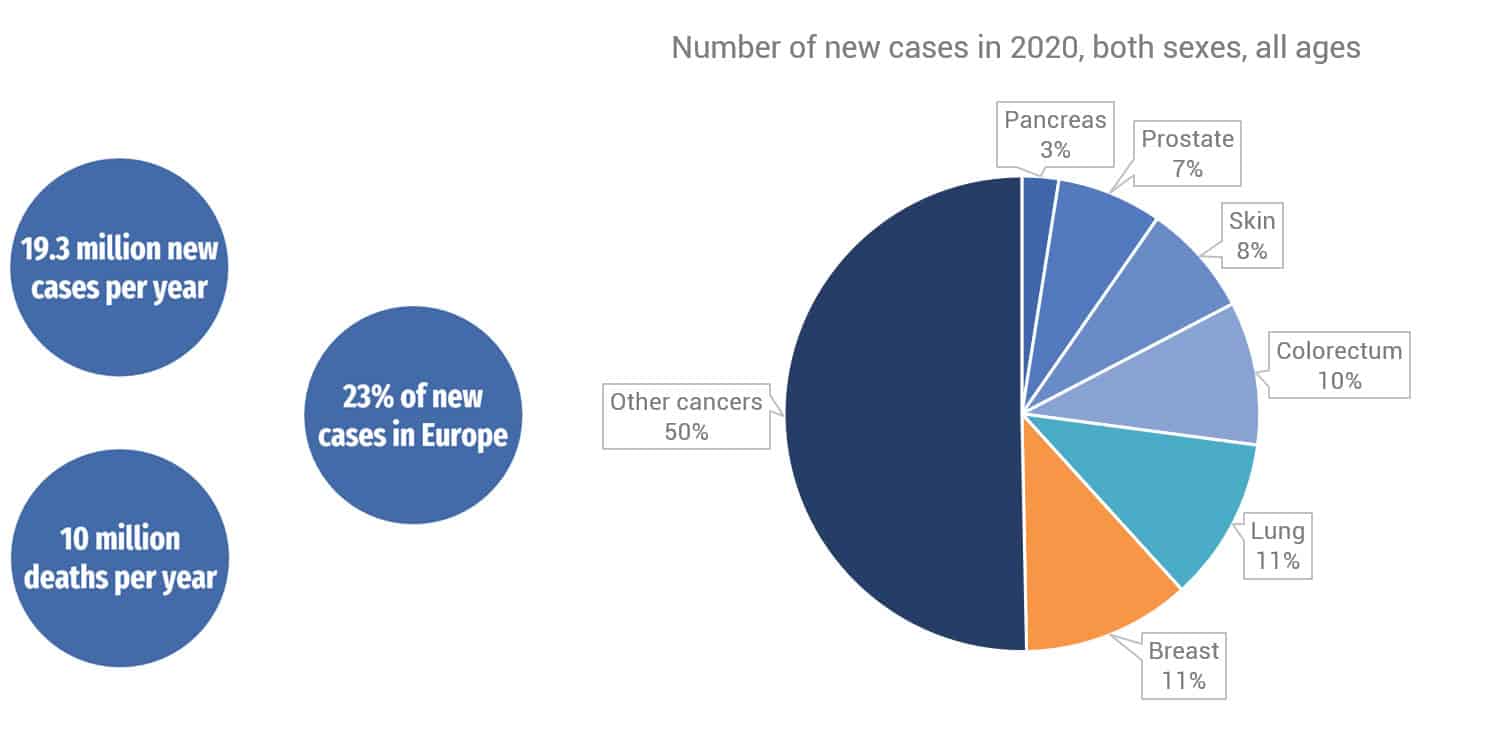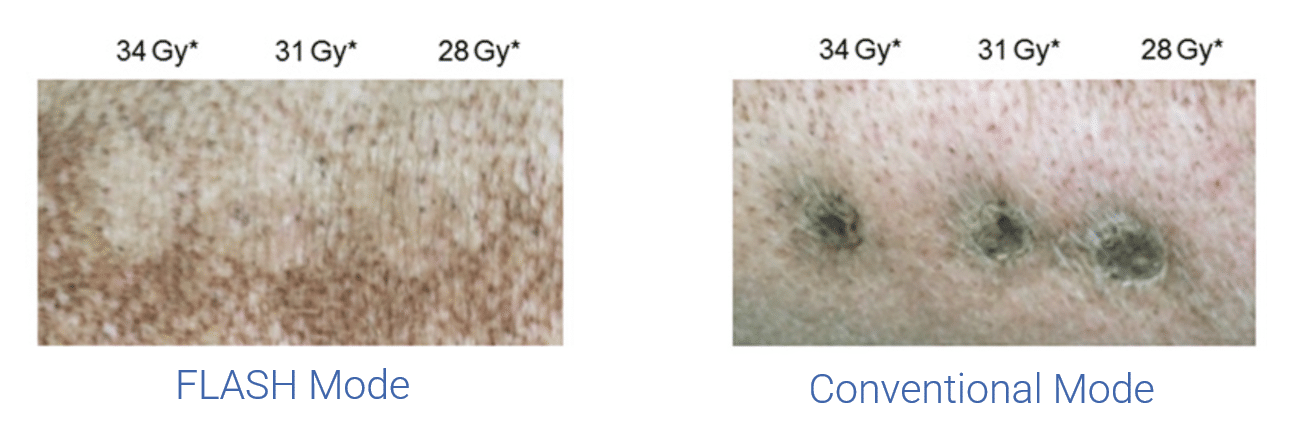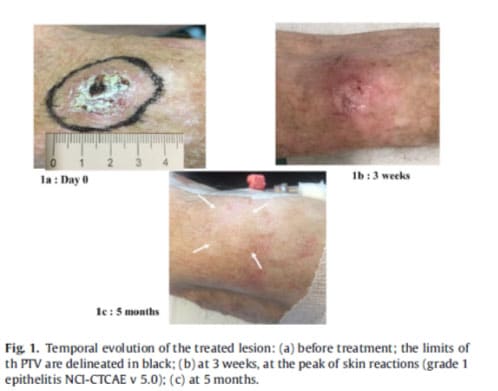FLASH Radiation Therapy
With more than 19 million new cancers and 10 million deaths per year, cancer is the second leading cause of death. Cancer care remains one of the most essential health policy priority issues worldwide. Yet 30-40% of patients with solid tumors are still resistant to all cancer treatment modalities. Together with surgery and chemotherapy or immunotherapy, radiotherapy is a major component of cancer care, recognized as one of the most cost-effective forms of cancer therapy. Based on radiotherapy indications, more than 50% of cancer patients receive at least one radiation treatment during the course of their disease, either alone or in combination with other treatment modalities.
In the last decade, major advances in high precision treatment delivery and multimodal imaging allowed radiotherapy to be better tolerated, with an increased proportion of patients living longer, cancer-free or with durable cancer control, and with fewer side effects.
| FLASH Radiotherapy | Conventional Radiotherapy |
|---|---|
| One single session | Up to 25 sessions |
| Very short irradiation time | Several minutes of irradiation time per person |
| Less side effects (demonstrated through several preclinical and veterinarian studies) | Often severe sides effects on healthy tissues which reducesthe patient’s quality of life |
| Drastically lower direct and indirect cost | Higher cost of treatment |
| Less stress for patients | Repetitive stress |
It delivers ultra-high dose-rates in a single session in a fraction of a second and has reproducibly shown a healthy tissue sparing effect in several preclinical studies, while still effectively destroying cancerous cells.
Despite these improvements, the efficiency of conventional radiotherapy is still limited by the radiation-induced side-effects on normal tissue surrounding the treated area. FLASH-Radiotherapy is a revolutionary method which will significantly improve outcomes in cancer treatment.
FLASH radiation therapy offers a more powerful and better tolerated treatment with several benefits over conventional radiotherapy and no equivalent today:
- Patients could be cured in a single session as opposed to 5 to 20 sessions, or even more, for conventional radiotherapy, facilitating patient logistics and decreasing care cost in proportion to the number of sessions.
- Ultra-short duration of irradiation eliminates problem of organ motion faced by conventional radiotherapy.
- A better tolerated treatment, i.e. fewer side effects, means better patient comfort and less treatment of side effects.
- For intra-operative applications, it allows a more efficient treatment with improved ergonomics and a much shorter irradiation time, facilitating the global operative logistics.
The FLASH effect has been studied since 2013 at CHUV in several preclinical studies1 (pig, zebrafish, mice, cats). Experiments on different species show that it has, for the same dose, the same destructive effect on the tumor as conventional radiotherapy, while sparing normal tissue, allowing a dose increase and a more efficient treatment.
It has also been tested on cat patients2: the first FLASH tests were performed with 6 cats with epidermoid carcinoma of the nasal planum. The randomized testing has been done on a dozen cats in total. The tumors were treated successfully, and the protecting effect of FLASH was again demonstrated.
In 2019, a first patient was treated for a multi-resistant skin lymphoma3: after having been treated more than a hundred times with conventional radiotherapy systems, one lesion was treated using FLASH radiotherapy and it was a successful test.



